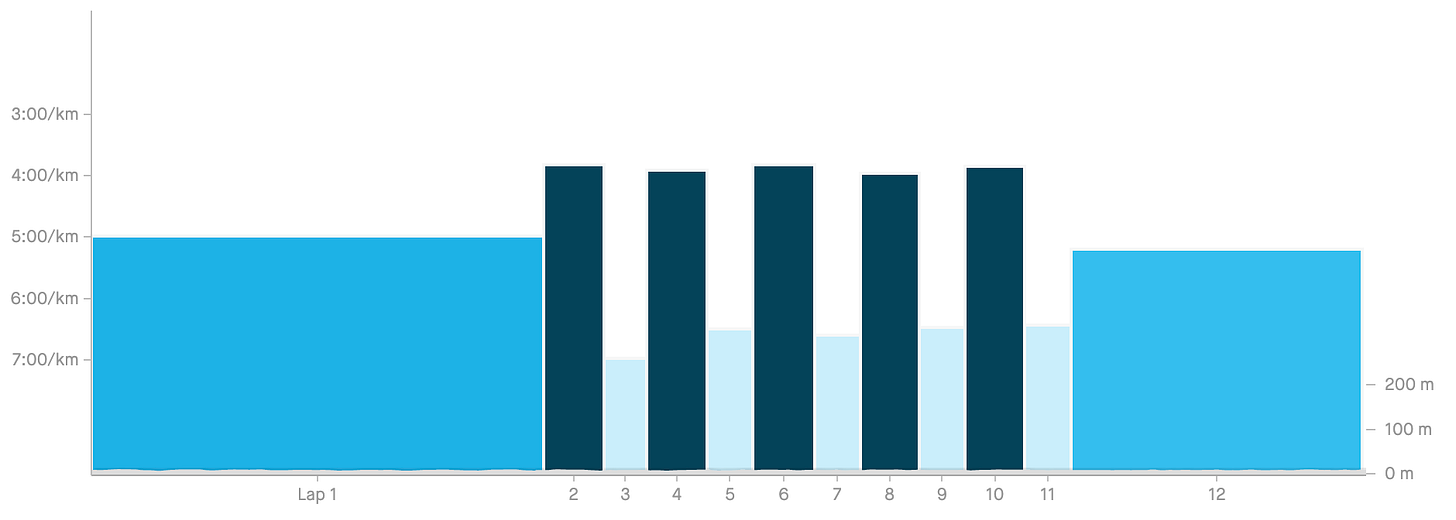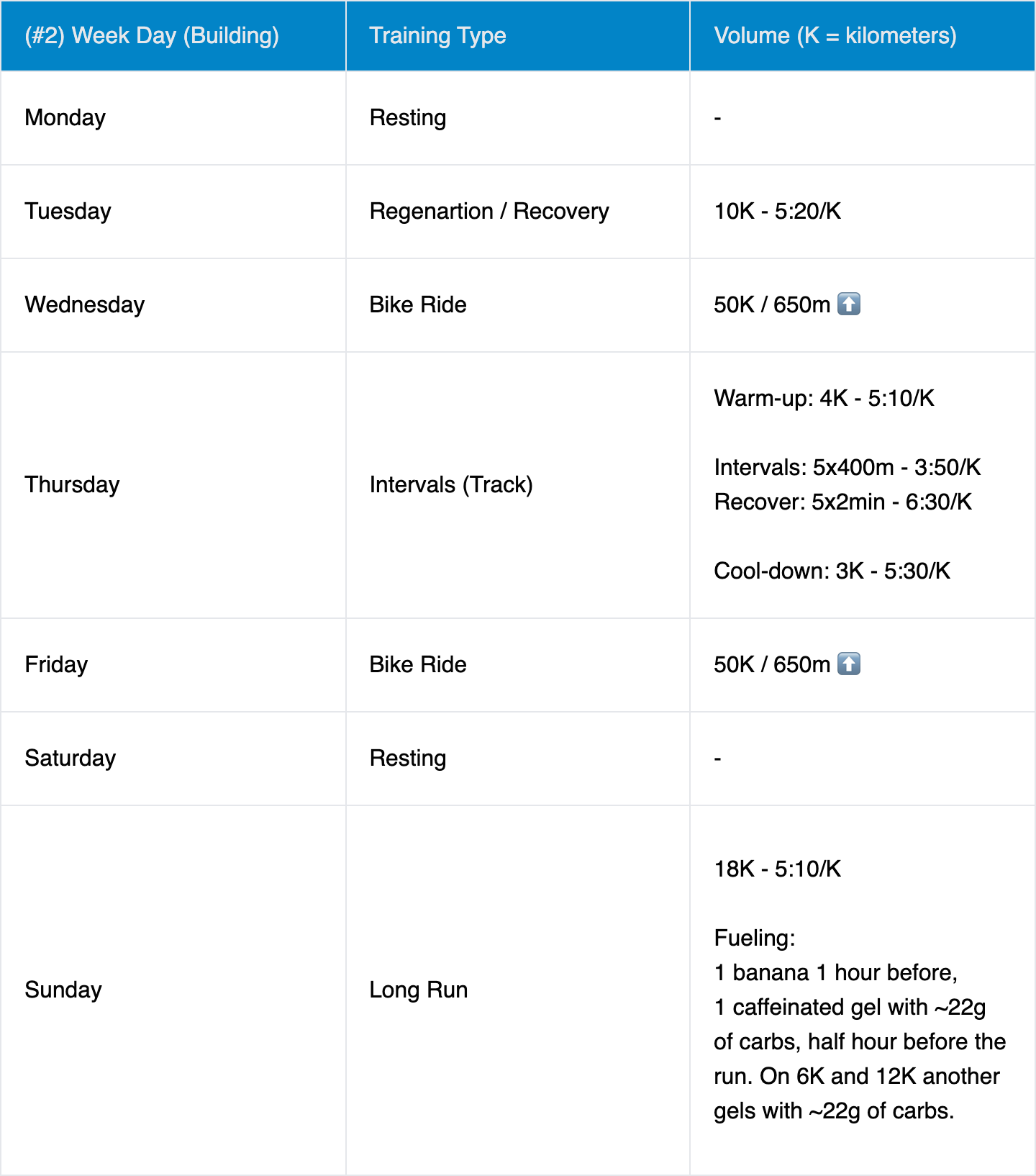Week #2 (Building)
Jumping into the proper training plan to prepare for five Half Marathons in 2025.
Disclaimer: Instead of setting out my entire training plan upfront, I decided that I’ll be sharing weekly summaries. Training isn’t always predictable - life, health, and performance can shift, and so will my approach. This will allow me to adapt as needed and keep each post relevant to where I currently am. Flexibility is part of the process, especially when the goal is to run five half marathons in a single year.
So here I am, wrapping up the second week of my preparation. Let’s break it down to create a realistic and adaptable training plan that others might find useful too.
First up: Mondays are for recovery. I’ve been planing this differently but now I’m designating Mondays as rest days for a couple of reasons:
Long Runs on Sundays: I plan to hit my longer distances on Sundays, which means starting the week fresh is a key.
Weekend Races: Many of my races (planned and not) will happen on weekends, so building in a rest day helps me recover fully.
This week, I actually put this approach to the test. Last Sunday, I had a 10K race, which was a quite effort that paid me out my new PR (personal record)! With a full training week topped off by a race, giving myself a true rest day on Monday felt like a smart move, and I’ll try stick to this pattern for now.
On Tuesday, I kicked things off with a 10K shake-out run at a steady 5:20/km pace. It felt smooth, a nice way to loosen up after Monday’s rest. Later, I joined a social football game, which added some good training volume. These games bring quite a bit of running, especially with three teams rotating on the field. I typically log an extra 6-8K from these sessions.
Bonus?! Football offers great variety with its quick turns, dynamic spins, and lateral movement. However, it also comes with an added risk of contusions and minor injuries. High-impact or sudden directional changes can be tough on muscles and joints, especially for runners. So, I’m keeping mindful of my movements during these games - trying to avoid tweaks or strains that could impact the rest of my training. It’s all about finding that balance between intensity and caution. Remember about the warm-up before any of other type activities.
Wednesday was dedicated to a different type of movement than running. I’ve read, and heard in multiple places that incorporating cross-training helps your legs adapt to the volume while also activating other muscle groups and movement patterns. Since I also cycle, I opted for a 2-hour bike ride with a solid amount of elevation. It turned out to be excellent preparation for Thursday’s track session.
If cycling isn’t your thing, there are plenty of other ways to cross-train, like walking, gym workouts, or swimming. These activities help build endurance and strength without the repetitive impact of running, giving your body a break while keeping you moving. Cross-training is a great way to add variety and reduce the risk of burnout.
Track. Thursdays are officially (I guess) my track days, and I’m excited to jump in this routine for real. Now that I’m a few weeks into training, it feels like the perfect time to incorporate some structured interval work (during the week). If you read my previous post about my first experience on the track, you’ll know I learned a few lessons, and this week, I came more prepared.
With my watch programmed, I had a clear structure and goal for the session. I headed to the city stadium, laced up my race shoes, and got to work. Here’s how the session broke down:
Warm-up: I started with a 4K warm-up at an easy pace of around 5:00/km. This allowed me to ease into the workout and get ready for the intensity to come.
Intervals: The main focus was 400m efforts, targeting a pace about a minute faster than my usual tempo runs. This put me around 3:50/K for the intervals. I completed 5 repetitions with 2-minute cool-down jogs at around 6:30/K between each one.
Cool-down: I wrapped up the session with a 3K “cool-down” at a steady 5:00/km pace. Which was too fast I think, but I need to test it to be sure.
This session was spot-on. I felt strong and maintained consistent pacing across all five splits, with each lap feeling controlled and comfortable. I’m starting to love these track days more and more - it’s such a stable, predictable environment that lets me focus purely on pace. Plus, there’s something incredibly satisfying about running precise intervals, knowing I can adjust based on how I feel in the moment. And - I hope - will be noticing my progress, with both faster tempos and longer intervals. This Thursday’s session was exactly what I needed, and I’m already looking forward to next week’s track day!
Friday was another cycling day, keeping up with a similar route from Wd. I covered about 50K with an elevation gain of 650m - a versatile and solid workout that offers a nice switch from running.
Saturday served as a well-timed rest day, giving me a chance to reset before Sunday’s long run. Taking a day off before these higher-volume efforts is like hitting a “reset” button - ideal for gearing up for a distance close to half marathon. 💪
On Sunday, I headed out for an 18K run, aiming for a steady pace of 5:10/km. The goal was not only to build endurance but also to test a fueling strategy that could work on race day. About an hour before the run, I had a banana and a gel with 22g of carbs. During the run, I took two more gels, one around 6K and the other at 12K, to keep my energy, and glycogen levels consistent.
So the tempo felt solid and steady, with no cramps or energy crashes, so it seems like this fueling approach is right on track. With a stable pace and no issues, this session was a great indicator that both the training and nutrition plans are lining up well - at leas for now. We will see how it goes when the pace and distance will be increased.
Another, important takeaway I can/could pick up is the value of upping carb intake the day before a bigger run, and/or the race itself, especially. A hearty meal - think pasta or pizza - helps store glycogen, providing crucial fuel for endurance efforts. Studies recommend aiming for about 600-700 grams of carbs in the 24 hours leading up to race day (half marathon) or any significant long run. This carb-loading strategy can make a noticeable difference, keeping energy levels fine, reducing the likelihood of hitting a mid-run walls.
And this if how the whole week plan looks like.
OK, that’s it for this week, I hope it will helps you building and maintaining your own plan for your trainings and goals that you wan’t to achieve. Enjoy.



